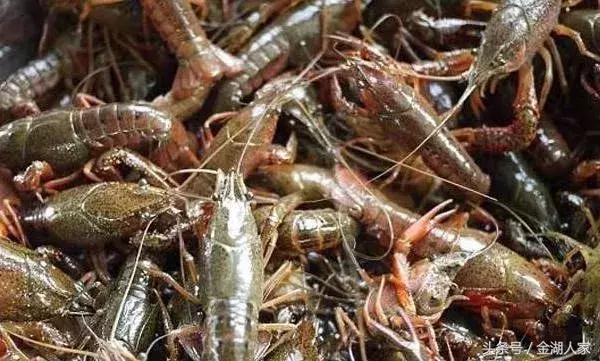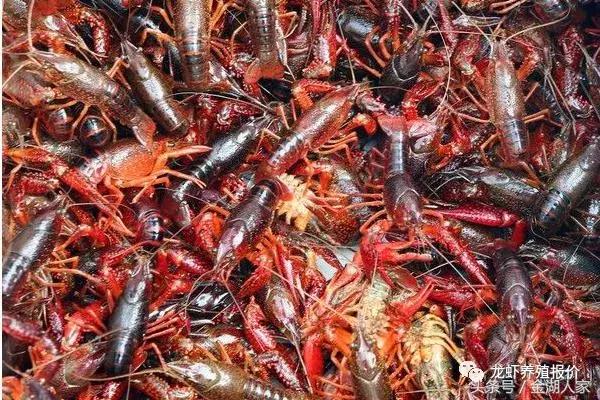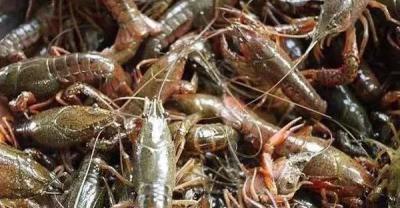How profitable is crayfish farming?
Lobster is delicious, nutritious and popular with everyone. As soon as the lobster is in short supply in the peak season, lobster farming has also become a popular breeding choice. So how profitable is lobster farming? Let's analyze it together.

How many lobsters can one mu produce?
According to the general situation, a mu of land can produce about 600 jin of crayfish, if intensive cultivation, the yield will be high, but the corresponding investment is also relatively large. If you do not reach this yield, it proves that there are not enough shrimp seedlings, you have to adjust the density and size of shrimp seedlings, and pay attention to the way of cultivation to see if there is anything wrong with the depth of the water.
How many jin of shrimp seedlings can be raised in an acre of land?
The seedling density depends on the seedling specification, shrimp pond area, pond water depth, pond bottom condition, water exchange condition, bait type, feeding method, production skill and management level, and should be determined with reference to the yield requirements and specifications put forward by shrimp farmers.
In intensive shrimp ponds, under the conditions of good quality of shrimp seedlings, superior water exchange conditions, guaranteed bait and high level of feeding and management, the amount of seedlings per mu can be about 20 000, and should not exceed 25000. After intermediate cultivation of shrimp seedlings (about 2.5 cm in body length), the amount of seedlings per mu was controlled between 8000 and 12000.

The amount of seedlings released can be calculated with reference to the following formula: release amount = (planned seedling yield (kg) × Mantissa required to cultivate 1 kg) / estimated survival rate.
In the formula: the planned yield per mu can be calculated with reference to the previous output of the surrounding farms; the tail number of 1 kilogram of shrimp can be calculated as 30-50 (body length 12-15 cm); the survival rate is 50%-70%, and the intermediate shrimp fry is 85%.
How much money can you earn by raising 20 mu of lobster?
At present, based on the estimate of 120jin shrimp per mu, the number of female shrimp per mu is 120jin / mu × 20 / jin = 2400 / mu, 1140 / mu × 200 / times / 2 times / year = 456000 / mu / year. The survival rate from spawning to young shrimp is 8% to 30%. According to the minimum 8%, the total number of annual adult shrimp is 456000 / year × 8% 36 480 / mu / year, and the eggs can be put on the market within 2 months. The weight of each adult shrimp grows to 50 grams (about 10 / jin), and the total annual yield per mu is 36480 / mu / year / 12 / jin = 3040 jin / mu / year, then the annual gross profit per mu is 3040 jin × 8 yuan / jin = 24320 yuan / mu.

Net profit = gross profit 24320 yuan ~ seed purchase cost (120jin × 48 yuan) 5760 yuan = 18560 yuan / mu, 20 mu lobster can earn 18560 yuan / mu × 20 mu = 371200 yuan a year.
How much is the lobster per mu?
1. The annual yield per mu can reach about 3000 jin, and the shrimp species will not be purchased and put in within 3-5 years, and the offspring will not degenerate or mutate, and the yield per mu will remain unchanged for a long time.
two。 Based on the estimate of 120 jin of shrimp per mu, the number of female shrimps per mu is as follows:

The input amount is 120jin / mu × 20 / jin = 2400 / mu, 1140 / mu × 200ind / time × 2 times / year = 456000 / mu / year.
3. The survival rate from spawning to young shrimp is 8% to 30%. According to the lowest 8%, the total number of annual adult shrimp is 456000 / year × 8% / mu. It can be put on the market after spawning for 2-3 months, the body weight of each adult shrimp grows to 50 grams (about 10 / jin), and the total annual yield per mu is 36480 / mu / 12 / jin = 3040 jin / mu / year. The annual gross profit per mu is: 3040 jin × 8 yuan / jin = 24320 yuan / mu, net profit = gross profit 24320 yuan-seed purchase cost (120jin × 48 yuan) 5760 yuan = 18560 yuan / mu
What problems should be paid attention to in raising crayfish?
1. Seedling: do not be bewitched by some sellers, saying that the price of domesticated lobster is high. There is no "hybrid variety" of lobster. At present, natural seedlings are abundant and cheap, but artificial seedlings are still in the laboratory stage.
2. Reproduction: some people think that as long as they put into planting lobsters in the first year, they can get good profits every year through their own continuous reproduction. in fact, the yield of lobster culture is the highest in the first year, and then decreases year by year. Because the lobster life cycle is 16-18 months, coupled with inbreeding, functional degradation, disease resistance decline, the yield will drop sharply or even no harvest after 3 years.

3. Water quality: fresh water quality is the key to the high yield of lobster culture. It is required that the coverage of aquatic plants in the pond should be 30% 60%, the transparency of the water body should be about 30 cm, and the dissolved oxygen content should be more than 5 mg / L. the water level should be kept above 80 cm in high temperature season.
4. Feed: lobster is an omnivorous animal bait creature, and its growth depends on the intake of protein. It can be mainly composed of fresh miscellaneous fish and field snails, supplemented with plant food, or a compound feed with a protein content of no less than 32%.
5. Disease: some people think that "lobster will not get sick". In fact, it is not. After high-density culture, various environmental factors are easy to cause lobster disease. The solution is mainly prevention and regular use of drugs.

6. Mixed culture: many people think that lobster can be mixed with fish in order to make rational use of space and improve the efficiency of aquaculture. In fact, lobster must not be mixed with carnivorous or omnivorous aquatic products. Because the lobster is most likely to be eaten when it is shelled, and silver carp and bighead carp are its natural enemies when the lobster is born, so mixed culture is not recommended.
7. Yield: the yield per mu of lobster is closely related to stocking density, culture environment, feeding amount, disease control and so on. Lobsters grow fast and can be sold for about 60 days. May to June is the peak sales season. Mating, spawning and burrowing began after the end of June, and the catch decreased sharply, so the rumors of lobster culture production exceeding 1000 jin and tens of thousands of benefits are really not credible. Generally speaking, the yield of lobster culture is about 450jin per mu, with an output value of 2500 yuan.
Above we have analyzed the lobster culture profit, thus it can be seen that lobster culture has high economic value, coupled with people's love and daily demand, the economic profit brought by the peak season is very considerable. However, also remind farmers, remember to purchase in the regular channels, and the use of reasonable and healthy breeding methods, will bring higher profits.
- Prev

How to cultivate Haohan Orchid
Cold orchid flowers and colors are delicate and changeable, the fragrance is mellow for a long time, and it can reveal its fragrance in frost. It is one of the cold-tolerant varieties of orchids. So, in addition to the most basic understanding of Han Lan.
- Next

The breeding methods and matters needing attention of succulent monosodium lucidum, and the pruning method of the breeding method of succulent monosodium lucidum
Related
- On the eggshell is a badge full of pride. British Poultry Egg Market and Consumer observation
- British study: 72% of Britons are willing to buy native eggs raised by insects
- Guidelines for friendly egg production revised the increase of space in chicken sheds can not be forced to change feathers and lay eggs.
- Risk of delay in customs clearance Australia suspends lobster exports to China
- Pig semen-the Vector of virus Transmission (4)
- Pig semen-the Vector of virus Transmission (3)
- Five common causes of difficult control of classical swine fever in clinic and their countermeasures
- Foot-and-mouth disease is the most effective way to prevent it!
- PED is the number one killer of piglets and has to be guarded against in autumn and winter.
- What is "yellow fat pig"? Have you ever heard the pig collector talk about "yellow fat pig"?

